Is there any better feeling than settling down in front of your tent at the end of a great day out, beer or hot drink in hand, stars overhead, friends for company? It’s hard to beat, especially when you have one of the best camping blankets wrapped around you.
But not all camping blankets are created equal. Sure, you can grab a cheap fleece option from your local discount shop, but the reality is it’s probably not going to cut it.
Despite what you might initially think, there’s a lot to consider when choosing a camping blanket.
Of course, the first decision you’ve got to make is whether or not you want something to lay out on the floor and sit on, drape around you for warmth, sleep under, or all of the above.
The good news is that we’ve got options for all eventualities here, so read on to find out how we tested, what performed best and what exactly you should be looking for when buying.
Best camping blankets at a glance
Best in test: Sea to Summit Tanami Down Camping Quilt 7°C
Best budget buy: Kelty Bestie Blanket
Best for glamping and vanlife: Passenger Cabin Recycled Sherpa Blanket
Most versatile camping blanket: Voited Recycled Ripstop Blanket
How we tested
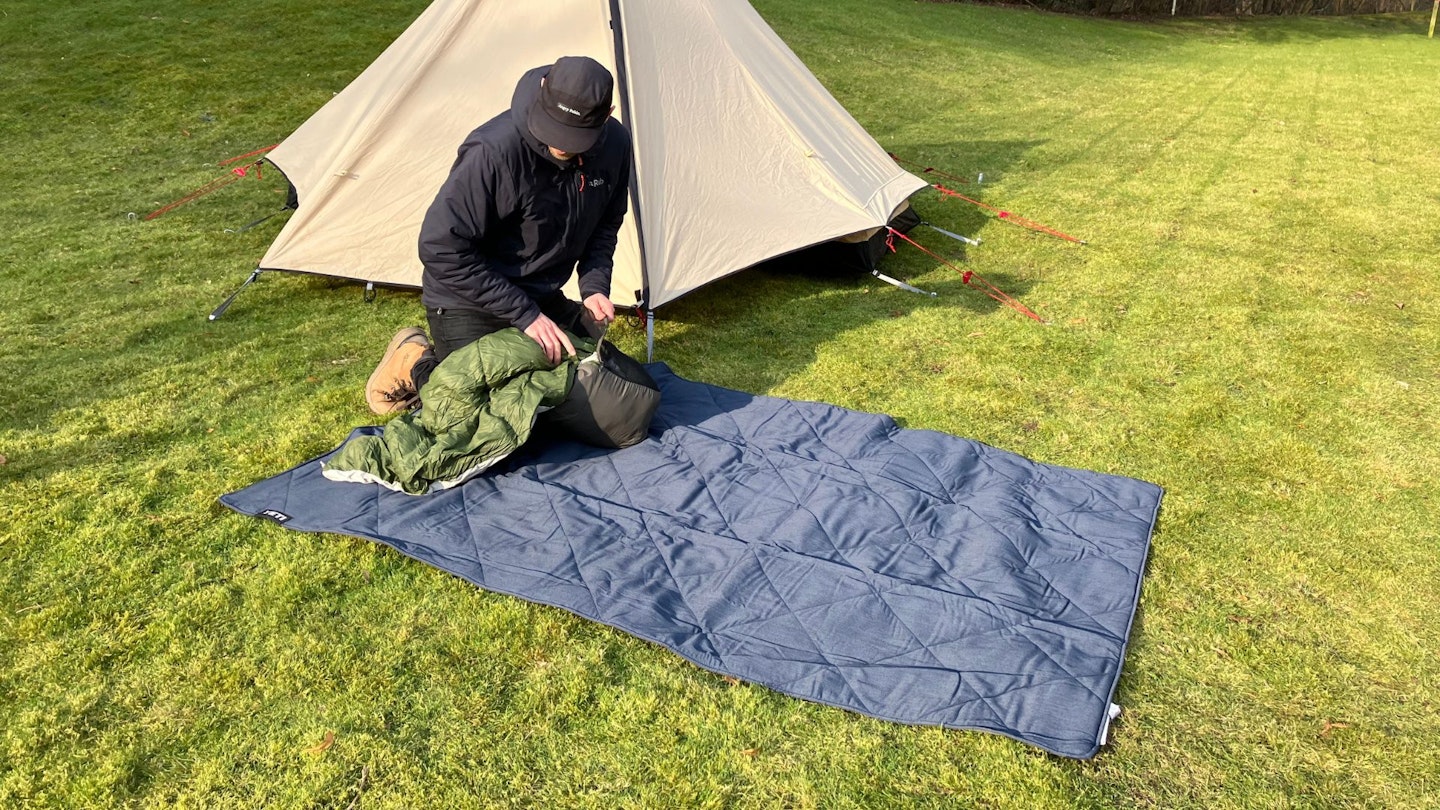
All of the reviews in this buying guide were written by LFTO deputy editor Rob Slade and content writer Fliss Freeborn, both of whom have years of camping, hiking and gear testing experience behind them.
To determine the best camping blankets, we've sat on them, slept with them, chucked them in and out of cars, rolled around with them on the floor and curled up in them for warmth on frosty evenings. They've been regularly used and abused (in all weathers) to test their packability, durability and usefulness.
Alongside that, we've conducted detailed, in-depth analysis of the key criteria that you should look for when picking your ideal camping blanket. This includes: versatility, warmth, comfort, weight and pack size, and value.
Want to know more about how we review products and why you can trust us? See our how we test page.
Best camping blankets reviewed:
The Sea to Summit Tanami is a thing of beauty. Not necessarily visually, but definitely in the comfort stakes. It’s warm, cosy and I’ve been fighting off the whole family, who’ve been trying to steal it.
This is built to be a camping quilt that you can sleep under, rather than an out-and-out blanket. As such it’s insulated with 650+ fill power duck down that’s RDS (Responsible Down Standard) certified.
That down has also been treated with a PFC-free ‘Ultra Dry Down’ hydrophobic treatment to help maintain the loft in moist environments. As a reminder, if down gets wet it tends to clump together, can’t loft as efficiently and isn’t as warm, so some sort of water repellence is good.
Given it’s meant to be slept under, the Tanami comes with temperature ratings. The comfort limit is 11°C and the lower limit is 7°C. That felt about right, but to be on the safe side you may want to stick to around 12°C.
Of course, if there’s two of you in there (this is the queen-size version, after all), then expect to feel warmer.
The quilt lofts well and would be a great choice for camping throughout summer and in milder spring or autumn weather. A drawstring at the bottom also allows you to handily pull it closely around your camping mattress.
As a blanket, it adds a lot of warmth and cosiness when sat around, but given the price (£270) you always feel conscious about not dragging it along the floor or getting it caught on a camping chair.
A 30D recycled nylon shell and recycled 45D nylon lining hold the insulation in place, but we worried slightly about its durability.
That being said, it’s definitely a harder wearing fabric than you’ll find on many lightweight sleeping bags, so as long as you’re not careless it should be fine (though I certainly wouldn’t use it as a picnic blanket to sit on top of on unprotected ground).
When spread out it measures an impressive 210x185cm, so there’s ample space for the whole family to slide under when sitting around camp.
It packs down really well, too, similar in size to a compressed sleeping bag, while the weight is a very respectable 983g.
While the price is steep, the fact that you can use it to sleep under, it’s down insulated and it works well as a blanket on evenings goes some way to make feel like a more reasonable purchase.
Pros
- Lovely and warm
- Comfortable
- Works as a blanket and a quilt
- Queen size, yet packs down small
Cons
- Not as durable as some other blankets
- Rather expensive
| RRP: | £270 / $299 |
| Weight: | 983g / 2lb 6.7oz |
| Insulation: | 650+ fill power, RDS-certified duck down |
| Outer fabric: | Recycled 30D nylon shell and recycled 45D nylon lining |
For a compact, warm and fun addition to your camping setup, look no further than the Kelty Bestie Blanket.
Designed with adventure in mind, this blanket boasts a soft-brushed polyester pongee lining that feels lovely against the skin, providing a cosy refuge after a day of exploration.
The exterior features a durable 75D printed polyester taffeta, ensuring it can withstand the rigors of camping life. It comes in a variety of colours and designs too, all of which are fun and funky.
The Bestie is reasonably lightweight and portable, weighing in at around 700g and packing down to a compact size of 17x29cm (but we reckon it can go smaller with a compression sack).
It’s not one to bring on an ultralight fastpacking trip, but for just about everything else, it makes for an effortless addition to your gear.
Its CloudLoft synthetic insulation offers commendable warmth, ideal for those brisk evenings by the campfire or as an extra layer to sleep under during unexpected temperature drops. Shoutout here for it also being good value in this list, too!
Pros
- Great value
- Soft brushed lining
- Lightweight
Cons
- Not as large as others
- More warmth offered by competitors
| RRP: | £29.95 / $24.95 |
| Weight: | 0.7kg / 1lb 8.7oz |
| Insulation: | Cloudloft synthetic insulation |
| Outer fabric: | 75D printed polyester taffeta and 75D polyester pongee, plus PFC-free DWR coating |
Passenger Cabin Recycled Sherpa Blanket
When the sun sets and the temperature drops like a stone, the Passenger Cabin Recycled Sherpa Blanket emerges as a bit of an essential for any van dweller.
Crafted from recycled materials, this blanket not only champions sustainability but also provides exceptional comfort.
The exterior showcases some lovely outdoor-themed graphics, but it's the interior that’s the real hero here. The gloriously soft sherpa fleece lining provides some serious warmth, making it an ideal choice for those crisp evenings under the stars.
Measuring generously, it offers ample coverage even for two folks snuggled up underneath. We love that it has multiple functions: as both a cosy wrap-around for the fire, an extra layer for the tops of your sleeping bags (or as extra insulation for your mats) plus, it turns into a makeshift camping pillow when folded.
The thoughtful design includes a button feature, allowing it to be worn as a cape – a practical touch for hands-free warmth during campsite activities.
Our only gripes are that it’s not more packable are that it stows into a stuff sack the size of a small shoebox, but still weighs a fair amount, and that the sherpa lining is prone to picking up dirt and debris.
So, while it’s not ideal for backpacking, this is the perfect van or car-camping blanket and it does well at campsites, too.
Pros
- Very cosy
- Versatile functions
- Great design options
Cons
- Sherpa fleece picks up dirt easily
| RRP: | £89.95 / $104.95 |
| Weight: | TBC |
| Insulation: | 120g recycled polyester |
| Outer fabric: | Recycled polyester ripstop (50D) with a PFC-free water repellent coating (DWR) |
For campers and van-lifers seeking something massive, versatile and absolutely bombproof, the Voited Recycled Ripstop Blanket is a top choice.
Crafted from 100% recycled 50D ripstop Repreve fabric, this huge eco-friendly blanket offers water and stain resistance, thanks to its environmentally friendly DWR Bionic Finish Eco Fluorine Free coating.
What that means in English is if you spill coffee on it, it doesn’t matter one little bit. This also makes it a top choice to use as a picnic blanket.
Like the Passenger model, the Voited blanket's four-in-one functionality is great fun. It transforms into a pillow, folds into a sleeping bag (good for indoor sleepovers) and snaps to become a waterproof cape, adapting to various outdoor scenarios.
Its three-layer construction, featuring 3D Featherlight Fiber insulation, provides warmth comparable to natural down, ensuring you stay cosy during chilly nights.
Do note, however, that the weight is not comparable to natural down, so again, this is not one for backpacking, but does at least store well, both folding into its own square stuff sack or cinching down with a compression bag.
Pros
- Highly durable
- Large and roomy
- Versatile
Cons
- Rather heavy
| RRP: | £99 / $109 |
| Weight: | 1.1kg / 2lb 6.8oz |
| Insulation: | Synthetic 3D Featherlight Fiber |
| Outer fabric: | Recycled ripstop REPREVE fabric with a PFC-free DWR coating |
Yeti Lowlands Blanket
“Your plush, all-terrain blanket for outdoor ventures, sandy beaches, and muddy pups.” That’s how Yeti pitches its Lowlands camping blanket on its website, right below the £200 price tag.
We’ll get to the price in a bit, but let’s first make some judgement calls. We’d have to agree with the brand’s statement that this is a plush blanket. The top layer is a combination of 65% polyester and 35% Rayon (a natural fibre made from wood cellulose that’s similar to viscose).
Then there’s 100% polyester insulation and a waterproof bottom layer also comprised of polyester called the Hydrobarrier Layer. The latter does a good job on wet ground, while light rain also beads up on it (though heavy downpours or prolonged use on a sopping surface will see the fabric wet out).
Sprawling out on it is comfortable, with a welcome amount of cushioning. The size is another plus, as it stretches out to 198x139cm. That’s plenty of space for four adults and a lot of snacks.
It stays down well, as you'd expect given its weight (2.92kg including storage bag), but can also be staked out via the six utility loops (pegs not included).
When pulled over yourself and a fellow camper or two it offers solid weather protection and a half-decent amount of warmth, though it naturally doesn’t compare to the camping quilts on test here in that regard.
There’s more good news, too, because the Lowlands Blanket is machine washable (on cold) and it can even be chucked into a tumble dryer on a low setting.
It’s a lot more durable than some other options here, but then that’s to be expected when you consider its weight and pack size, which is anything but small and lightweight.
Still, it’s good for car camping or using as a comfy spot for your dog, as Yeti suggests. That being said, it’s £200, which is a lot of money. Is it too much? Maybe, but there’s no denying this is a premium bit of kit, and it’s one that would take a lot of use and abuse.
Pros
- Comfortable to lay out on
- Durable and waterproof bottom layer
- Machine washable
Cons
- Heavy and large pack size
- Expensive
| RRP: | £200 / $200 |
| Weight: | 2.92kg / 6lb 7oz |
| Insulation: | 100% polyester fill |
| Outer fabric: | Top layer: 65% polyester, 35% Rayon. Bottom layer: Polyester with waterproof Hydrobarrier Layer |
Aside from the Matador Pocket Blanket, the Alpkit Cloud Cover quilt is the lightest option on test, weighing just 455g. It packs down into the integrated stuff sack, ending up being slightly smaller than a standard football.
This is all great for saving space and it makes it a plausible option for wild camping, but bear in mind there is no looser-fitting storage sack, so you’ll need to think about that when storing it to avoid hampering the down clusters.
Insulation comes in the form of 750 fill power DownTek hydrophobic down (it’s RDS-certified, too), so it has some water repellent qualities and lofts reasonably well. The fill weight is 200g (for comparison, the Sea to Summit Tanami quilt has 260g of fill in its single size).
Unlike the Tanami quilt, there’s no temperature ratings here. The Cloud Cover doesn’t loft as well as the latter and doesn’t feel as warm, but it’s fine for summer use.
When the temperature starts to dip you’d want something warmer to sleep under, while some other blankets here also offered slightly more warmth and cosiness as a blanket.
That being said, the Cloud Cover is certainly going to be adequate through summer and for curling up in a camping chair in the shoulder seasons.
There are also snap fasteners down the length of the quilt to help you use it more like a sleeping bag, or you can fasten one and wear it like a cape.
For use as a blanket, one thing to note is that the outer material is only 20D polyester, so it’s not as hard-wearing as many other options here (which is why it’s so lightweight). As a result, it’s easier to snag and more susceptible to down feathers escaping.
It measures 190x80cm when fully unfurled, which provides ample coverage for two people sat down together.
Pros
- Very light and packable
- Hydrophobic down
- Packs into own stuff sack
Cons
- No storage bag
- Outer fabric not very durable
| RRP: | £149.99 / $209.99 |
| Weight: | 455g / 1lb |
| Insulation: | 200g of 750 fill power DownTek hydrophobic, RDS-certified down |
| Outer fabric: | 20D polyester |
Let’s get one thing straight right off the bat, this camping blanket is not the one for you if you’re after some extra warmth when you’re sat around camp. It’s super thin and has no insulation.
What I would say, though, is that it’s a pretty decent wind blocker, so if there’s a bit of a chilly breeze, it would be helpful to cut that out, reducing the windchill you may feel.
Given this buying guide is geared up for specifically testing blankets for their use around camp, the scores the Matador Pocket Blanket has received are relatively low. But taken out of this context they’d be higher.
You see, for hiking and travel, this picnic blanket is a real winner. It’s super lightweight (102g) and packs down incredibly small. So much so that you’d hardly notice it in your bag.
It excels as a picnic blanket or as something to sit on at the beach, and there are handy pockets in each corner that you can fill with rocks or sand to keep it held in place.
Alternatively, if you’re on grassy ground, you can use the integrated stakes to peg out the corners to achieve the same effect.
Given its lightweight nature, there’s no cushioning on offer, so you’ll want to pick your spot carefully. Thankfully, however, the material is made from a water and puncture repellent HyperLyte Nylon, which has proved reliable so far.
You can comfortably fit two adults on it, plus a mini feast, or a family of four, but we’d say four adults would be a bit of a squeeze (it measures 160x110cm). Once you’re done, the blanket handily folds up into its own integrated storage pouch (there are lines on the blanket to help you get this right).
So although not our first pick for camping (which is why it gets a 3.5-star rating), we’d rate it considerably higher for hiking and travelling.
Pros
- Incredibly lightweight and packable
- Handy corner stakes to peg it out
- Packs into own integrated pouch
Cons
- Not that useful for staying warm in camp
- Zero cushioning, so not the most comfy to sit on
| RRP: | £28.95 / $30 |
| Weight: | 102g / 3.6oz |
| Insulation: | N/a |
| Outer fabric: | Ripstop nylon with PFC-free waterproof PU coating |
Okay, so it’s not quite a blanket in the traditional sense, but we’ll put it here anyway. Because when it comes to winter camping, the Therm-a-Rest Vela -6C Double Quilt is a top notch product, delivering exceptional warmth, weight and packability.
Designed as a quilt for two – or as an amazingly warm wrap-around layer for solo campers – it’s insulated with 650-fill Nikwax hydrophobic down, which stays warm even in damp conditions.
We found it to be perfect for extra toastiness on winter backpacking adventures. It thrives in frosty temperatures thanks to box-baffle construction that eliminates cold spots and an elasticized foot box to keep toes warm, too.
What really sets the Vela apart is how small and light it packs for its insulating power. Weighing just 1.19kg, it compresses impressively, leaving space in your pack for other essentials—or indulgences.
Its versatility is top-notch: drape it over for milder nights or attach it securely to sleeping mats, over your existing sleeping bags, for a snug cocoon on colder evenings.
Durable, water resistant and very lightweight, this is hands-down the best camping blanket for winter nights.
Pros
- Very lightweight
- Incredibly warm
- Can be used instead of a sleeping bag
Cons
- Expensive
- Overkill for casual campers
| Price: | £370 / $449.95 |
| Weight: | 1.27kg / 2lb 12.8oz |
| Insulation: | 650 fill power Nikwax hydrophobic down |
| Outer fabric: | 20D polyester with a durable water repellent treatment |
What are the different types of camping blanket?

A camping blanket tends to be designed for adding warmth by throwing it over yourself when you’re sat around. Of course, you could also use it as an extra layer when going to sleep, too.
They come in many different shapes, sizes and constructions, depending on their intended use. You get fabric ones, including fleecy options, which are often rather cheap, but aren’t as warm as insulated options and don’t come with any protection from the elements.
Then there are insulated ones, which may use either a synthetic or down insulation to offer increased warmth, and sometimes offer weather protection, too.
Insulated blankets and camping quilts can look and feel quite similar, though the former typically offer a bit more durability and weather protection than the latter.
Both also may look similar to a sleeping bag, but unlike sleeping bags they’re square or rectangular, don’t have a hood, nor a zip.
A camping quilt comes with substantial insulation so you can sleep under them when camping, while they’re also lighter and more packable than a typical camping blanket.
Then there are the camping blankets that you can use by laying out on the floor and sitting on top of. These may not have so much insulation, but they’re likely to have a more robust backing to protect you (and it) from damp, muddy or rough ground.
Are fleece blankets good for camping?
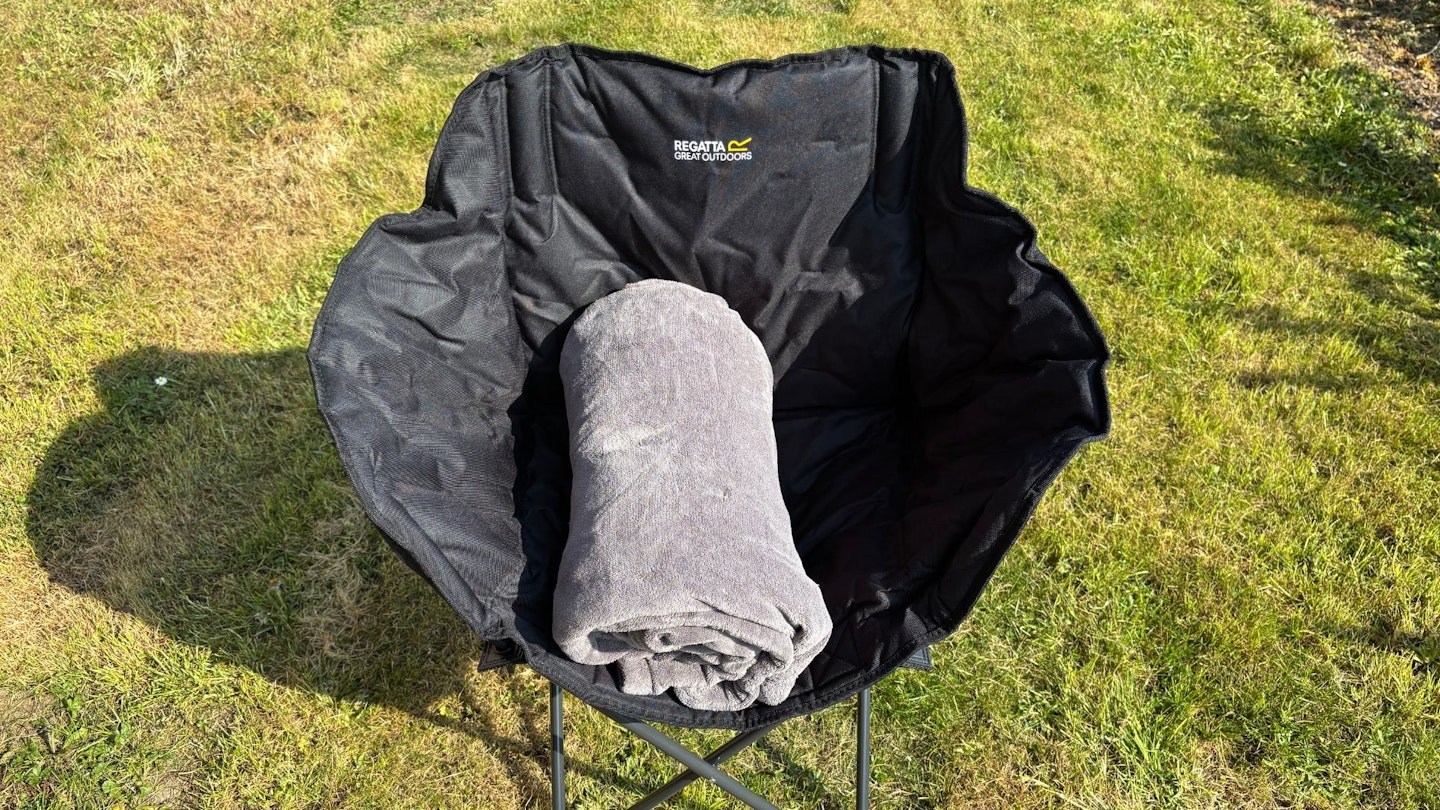
Fleece blankets are typically a lot cheaper than dedicated camping blankets. And sure, they certainly bring something to the table when camping.
They’re normally super soft and easy to wash in a machine if they get dirty, but the amount of warmth on offer is often limited, there’s not typically any water or wind repellence and the quality can be found wanting.
If you need something cheap in a pinch, then they’ll be fine. If you’re a regular camper, want something that’s super warm and are happy to pay a bit more for it, look elsewhere.
Is a blanket or sleeping bag better for camping?
It depends what we’re talking about. If you want to sleep in or under it, then more often than not a decent sleeping bag is going to offer more warmth than its counterpart.
That’s mainly due to the shape – sleeping bags are enclosed and often tapered to keep the warm air inside, while blankets won’t be as effective at keeping the heat in. The insulation inside sleeping bags is also usually – but not always – a higher quality.
However, if we’re asking the question with the aim of just sitting around in a camping chair, then an insulated blanket may be the better bet. It means you don’t have to worry about getting your expensive sleeping bag dirty, it’s easier to wrap around yourself or multiple people and it often packs down smaller, too.
Of course, some ‘camping quilts’ can straddle both use cases reasonably enough, as long as you’re sleeping in mild conditions (you could even pair it with a sleeping bag liner).
How to pick the best camping blanket for you
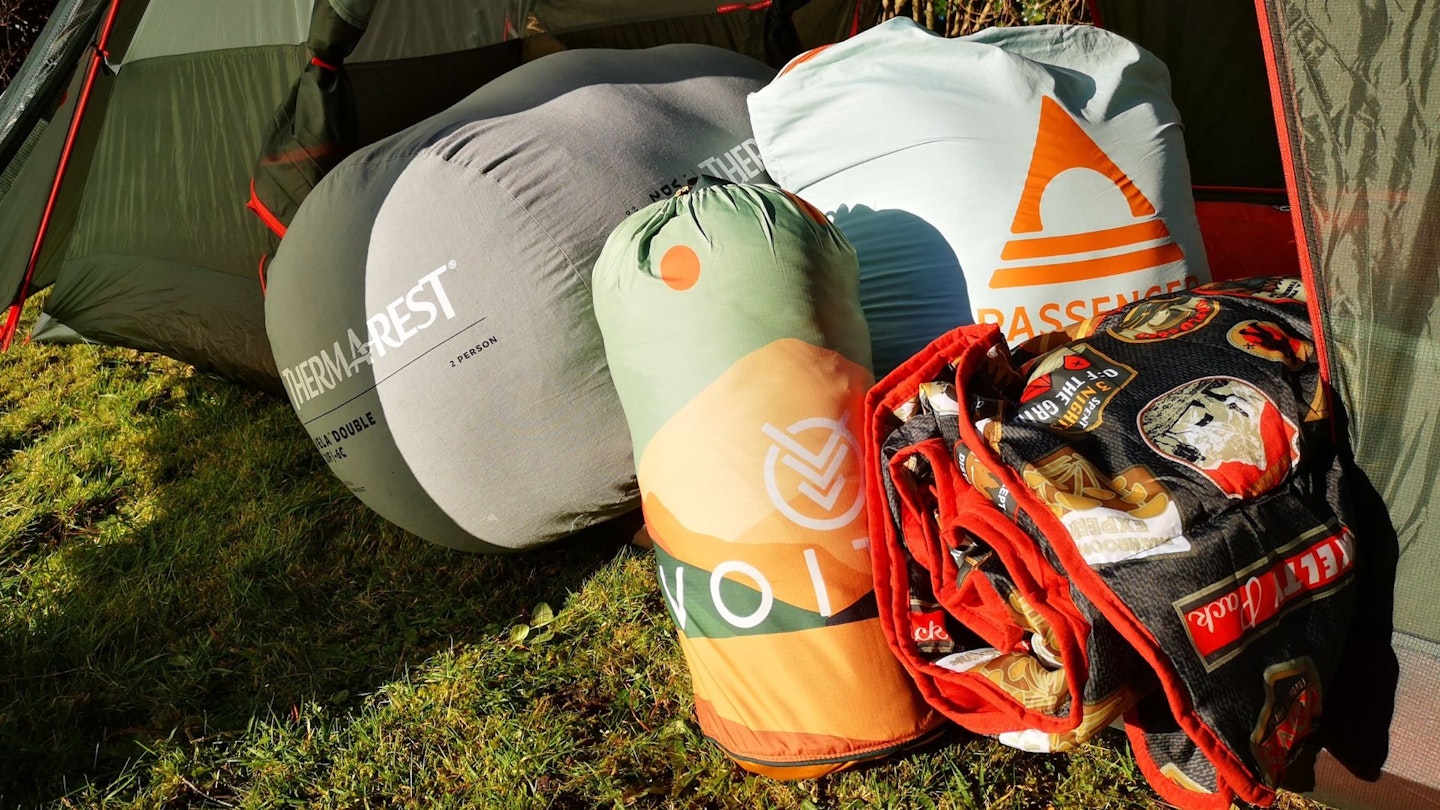
As we’ve mentioned at the start of this article, the very first thing you need to think about is how you’re going to be using your blanket. Beyond that, consider the following:
Warmth and insulation
You’ll find varying levels of insulation in camping blankets, as well as different types of fill.
Down fills typically offer a better warmth-to-weight ratio, but performance can suffer if the insulation gets damp. Meanwhile, synthetic insulation doesn’t pack down as well and is heavier but copes better in adverse weather.
Some brands may outline the amount of insulation in their blankets and, if it uses down, then you may also get a fill power rating, which can give you a bit of an insight into how much warmth is on offer.
However, you might not be lucky enough to have that info, so keep an eye on how much insulation it feels like there is inside of the blanket, plus consider how well it lofts.
If the blanket you’re looking at is classed more as a camping quilt, then it may have a temperature rating, which will enable you to judge how suited it might be for colder weather or for actually sleeping under.
These temperature ratings work in the same way as sleeping bag ratings, with comfort and lower limits.
The other thing to consider among all of this is how well the blanket blocks out cold winds, as this will go some way to improving your comfort and warmth.
Weight and packability
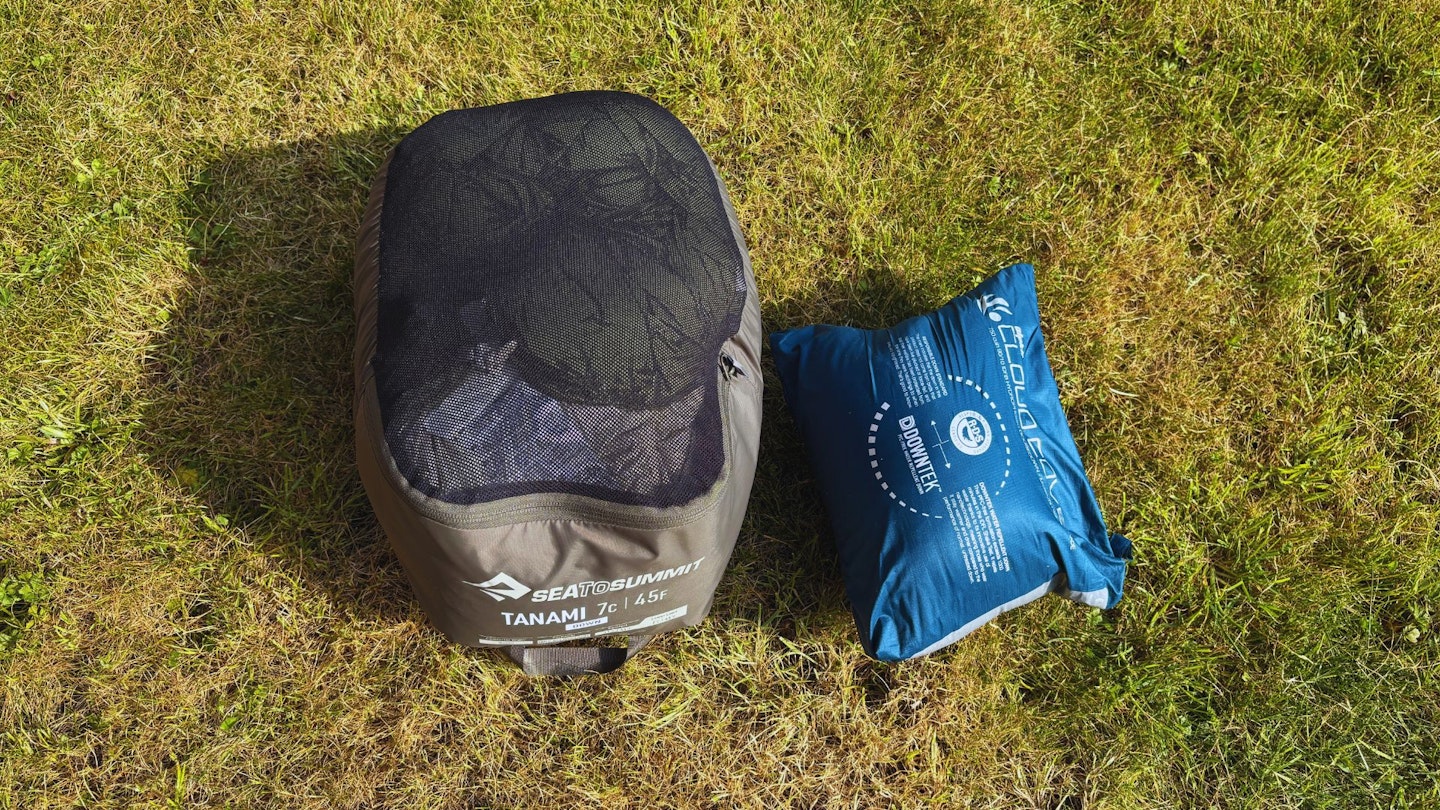
How lightweight and packable you want your camping blanket to be depends on your intended use. If you’re taking it backpacking and planning to sleep under it instead of a sleeping bag, you’ll want it to be as light and packable as possible. In this case, it really needs to pack down smaller than a sleeping bag to justify its inclusion.
If you’re purely going to be car camping weight is less important, but if it packs down small it means you have more space for all of your other kit.
Durability and build quality
Whether it’s a camping table, camping chair or your family tent, products tend to see a bit of abuse when you’re sleeping in a field. There’s no reason to think the same wouldn’t be true when you invest in a camping blanket.
As such, build quality certainly comes into play. By this, we mean the strength or stitching, the abrasion resistance of the material and the longevity of the insulation.
Keep an eye on denier stats to see how thick a face fabric is and consider how much abuse your blanket is likely to suffer. If it’s a lot, make sure you go for an option that uses a thicker fabric on one side.
Just be aware that greater durability tends to come at a cost to weight and packability.
Size and coverage
If you’re flying solo, this might be less of a concern. But if you want to cosy up with other people, then you’ll want a bigger blanket.
At the same time, you don’t want something so large that it’s going to be dragging around in the mud when you’re sat in your camping chair.
Work out your ideal size and then keep that in mind when shopping.
Versatility
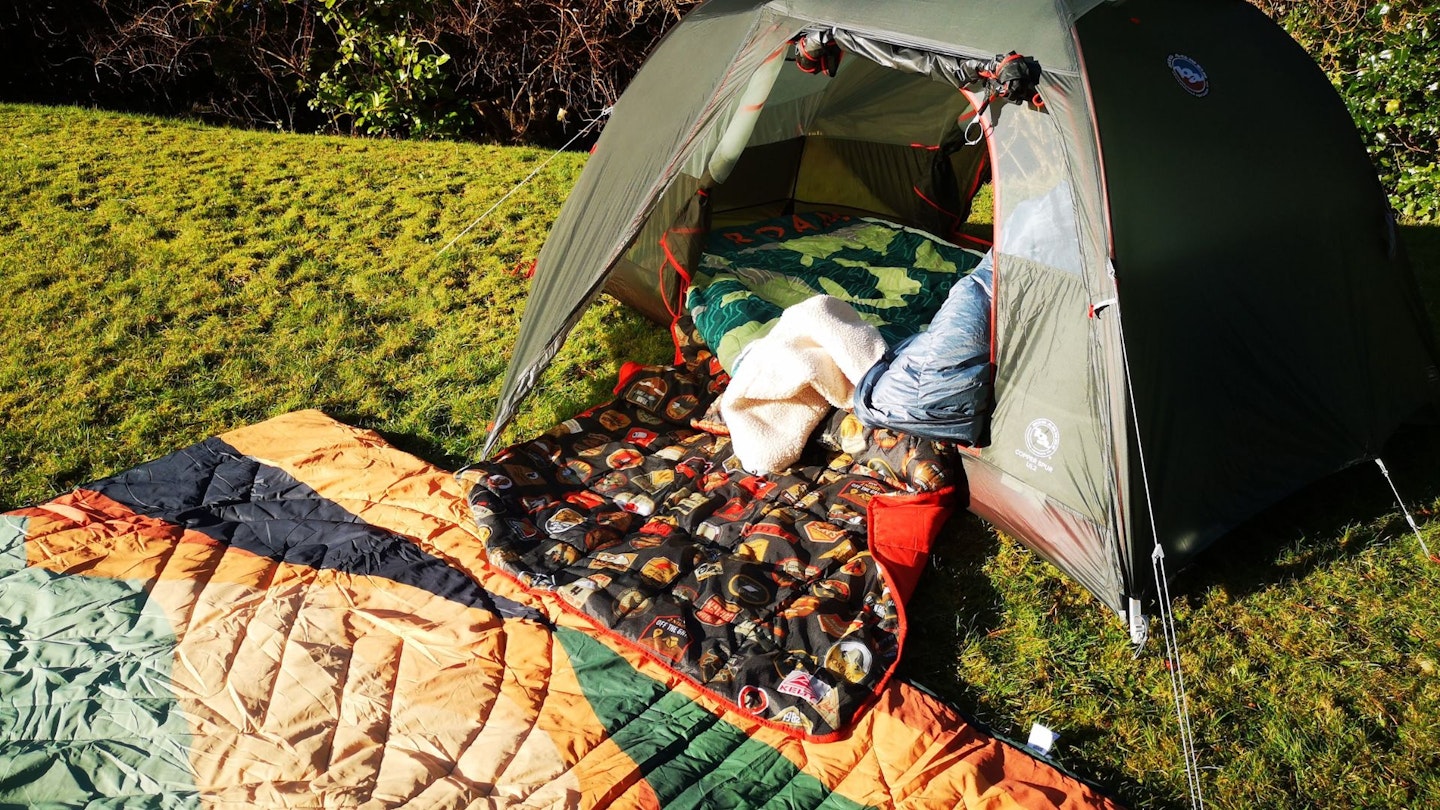
If your new camping blanket can be used in a variety of scenarios, that can only be good news. Assuming warmth is your main ambition, consider if your blanket can be used when sleeping, chilling around the campsite or at home through winter.
Ones that have a tough material on one side can also be used as a picnic blanket, while lightweight and packable blankets can even offer an alternative to a sleeping bag on summer wild camping trips.
Cleaning and maintenance
Camping can be a dirty affair, so cleaning and maintenance is a key consideration when picking a camping blanket. If you’re going to be sitting on top of it on the floor, then you’ll absolutely want something that’s easy to wipe down and clean off afterwards.
If your blanket is washing machine friendly, then that’s even better. Just make sure to follow the instructions on the label – particularly if your blanket has a durable water repellent (DWR) treatment.
Value
What may be great value for one person may not be for another. Essentially, your ideal camping blanket needs to offer great performance within your budget.
If it’s versatile and can be used at home, around camp and for sleeping in, then that value for money inevitably goes up. If it’s well-built, super warm and cosy, and comes in within budget, then that sounds like good value, too.
However, if it’s £100 more expensive than another product that does the same job, we’d say that’s not such great value.
About the authors
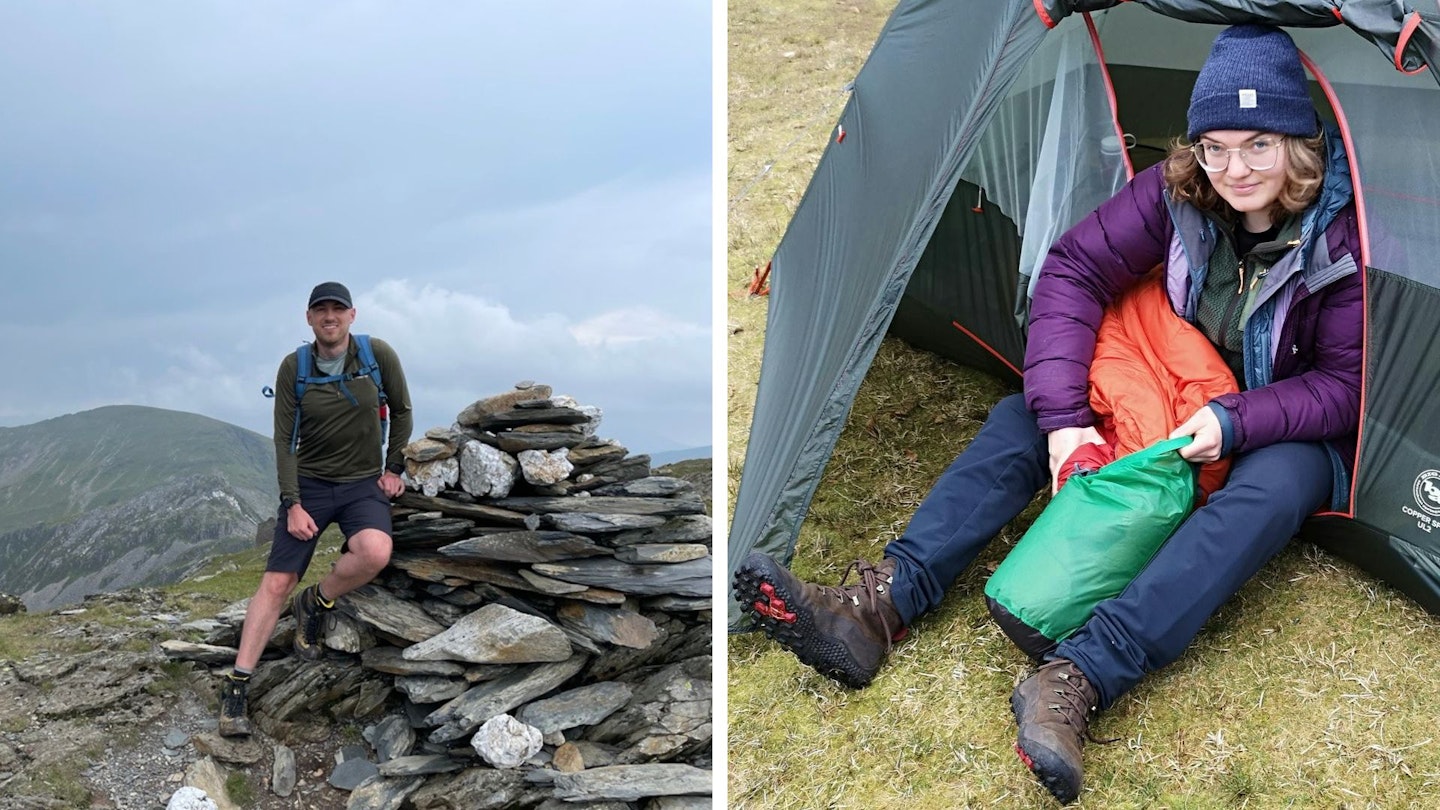
Rob Slade (above left) joined LFTO as deputy editor in 2024, but before that he spent time as content editor at 220 Triathlon and editor of Adventure Travel magazine.
Rob’s been hiking and camping for over half of his life. During that time he’s climbed 4,000m peaks in the Alps and explored all over the world, including a month-long camping trip in New Zealand.
Fliss Freeborn works across LFTO, Country Walking and Trail magazine. Her childhood was full of campfires, coasteering and building makeshift camps. These days she explores by any human-powered means possible.
On most weekends she can be found sat in a bothy or outside a tent talking at length about how amazing her hipflask is at carrying olive oil.





































